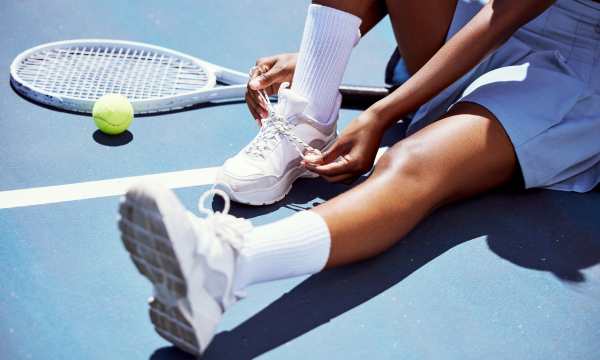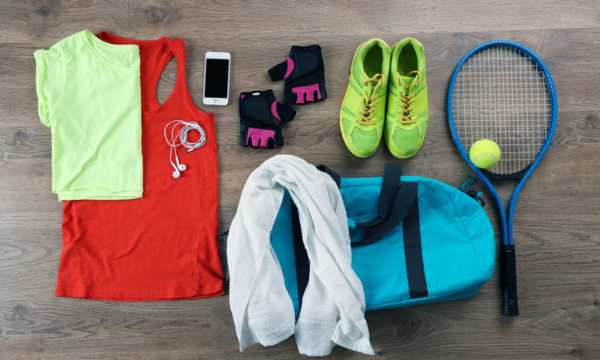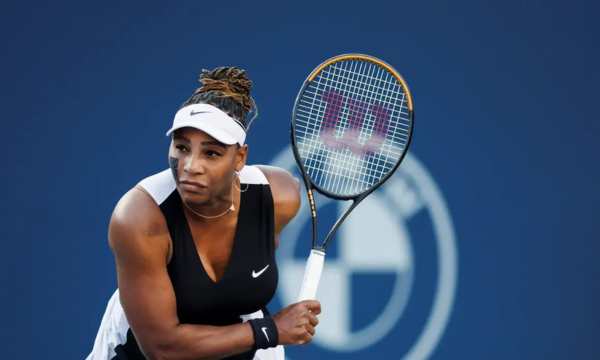Tennis Equipment: Essential Accessories for a Good Game
The right tennis equipment can make all the difference for a unique experience in this elegant and challenging sport.
Anúncios
Every racket, shoe, and accessory is designed with specific purposes that directly impact your performance on the court.
Tennis has evolved drastically in recent decades, and with it, the technology applied to the materials used by players.
Understanding the characteristics and functions of each item is essential for those who want to evolve and make the most of every moment on the court.
How to Choose the Racket That Will Transform Your Tennis
The racket is possibly the most important among tennis equipment and deserves special attention when choosing.
The ideal weight generally varies between 280g and 340g, depending on your strength, technique, and goals.
Heavier rackets offer more power and stability, while lighter ones provide better maneuverability and reduce physical wear.
The size of the racket head is another crucial factor in selecting quality tennis equipment. Larger heads (over 100 sq. in.) offer a wider sweet spot, making them ideal for beginners.
Advanced players usually prefer smaller heads (95-98 sq. in.) for greater precision in their strokes. Some technical aspects to consider are:
- String pattern: open (16×18) generates more power and spin; closed (18×20) provides more control.
- Frame stiffness: directly influences the transmission of energy and vibrations to the arm.
- Composition: graphite, carbon fiber, basalt, Kevlar – each material has distinct properties.
Don’t skimp on time testing different models before making the final purchase of tennis equipment.
If possible, try the rackets in real game situations to feel how they respond to your characteristic strokes.
How Your Shoes Can Improve Your Performance
The appropriate footwear is often overlooked in the composition of tennis equipment but plays a fundamental role in performance and injury prevention.
The choice should first consider the type of court where you play most. Clay court shoes have specific soles with shallower and denser grooves to facilitate controlled sliding.
For hard courts, look for shoes with more cushioning and sole durability, essential characteristics to protect your joints.
The ideal shoe should offer lateral stability without compromising the flexibility needed for quick direction changes.
Durability is another crucial aspect when selecting this component of your tennis equipment.
Players who play on fast or synthetic courts should invest in models with sole durability guarantees.
Comfort should never be sacrificed for other attributes, as long matches require shoes that do not cause discomfort or blisters.

Appropriate-footwear-for-playing-(Source-Google)
Technical Apparel: More Performance and Comfort on Court
Modern apparel is part of the tennis equipment that has drastically evolved in recent years, incorporating technologies that improve performance.
Moisture-wicking fabrics transport sweat away from the skin, keeping the body dry even in intense matches.
This technology is essential for comfort during prolonged games. Materials with UV protection have become standard in contemporary tennis, especially for those who play on outdoor courts.
Moderate compression in some pieces can improve blood circulation and reduce muscle fatigue.
Shorts and skirts with inner pockets for storing balls are practical details that make a difference during matches.
When assembling your tennis equipment kit, invest in versatile and durable pieces. The combination of comfort, functionality, and durability should guide your choices in this segment.
Remember that appropriate apparel is not just aesthetics but of performance and protection during the game.
Essential Accessories That Make a Huge Difference
Among essential tennis equipment, some seemingly simple accessories can transform your experience on the court.
The overgrip, for example, not only absorbs hand sweat but also customizes the racket handle thickness according to your preference.
It is recommended to frequently replace this accessory to maintain ideal grip. Vibration dampeners are not just decorative elements but can reduce the transmission of vibrations from the racket to the arm.
Although their effect is subtly perceptible, many professional players do not dispense with this component.
Headbands and wristbands absorb sweat that could drip into the eyes or hands at crucial moments of the game.
A quality thermal racket bag protects your tennis equipment from extreme temperature variations that can compromise the strings and frame.
Investing in a bag with specific compartments facilitates the organization and preservation of all your accessories, as well as providing practicality in transporting them to the courts.

Essential-tennis-accessories-(Source-Google)
Tennis Equipment That Multiplies Your Development
Specialized training tennis equipment can significantly accelerate your technical progress. Automatic ball launchers, for example, allow consistent practice of specific shots without depending on training partners.
These devices can be programmed to simulate different game situations with controlled speed and rotation.
Accessories such as the agility ladder and cones are essential for developing agility and footwork specific to tennis.
Balls with differentiated weights help strengthen the muscles involved in the strokes while maintaining the appropriate technical movement pattern.
Resistance bands can be used to improve the power and mechanics of strokes. Other specific training equipment:
- Rebounder (adjustable return walls).
- Precision target to fix on the net or the back of the court.
- Balance platforms for proprioceptive strengthening.
- Motion analysis cameras for technical corrections.
The intelligent combination of these resources with well-structured training sessions can provide remarkable technical evolutions even for experienced players.
Technology applied to training has democratized access to methods previously available only to professional athletes.
Know the Equipment for Different Surfaces
Each court surface requires specific adaptations in the tennis equipment used.
On clay, rackets with a more open string pattern provide greater spin on the ball, essential for playing on this surface.
Clay court shoes have a herringbone sole that allows controlled sliding without losing stability.
On hard courts, tennis equipment with greater impact absorption is essential to prevent injuries.
Stiffer rackets can offer the necessary power on this surface, while shoes with durable soles and premium cushioning protect the joints.
The lifespan of the strings is also shorter on these courts due to the more intense friction with the ball. Adaptations by court type:
- Clay: shoes with specific soles, strings that generate more top spin.
- Grass: shoes with small studs, rackets that favor flatter shots.
- Hard court: shoes with more cushioning, more durable strings.
- Indoor: lightweight equipment that prioritizes precision and speed.
Apparel also varies according to the surface, with more breathable fabrics for indoor courts and high UV protection for outdoor courts.
How to Triple the Durability of Tennis Equipment
Proper maintenance can significantly extend the lifespan of your tennis equipment, generating long-term savings.
For rackets, proper storage in a dry place, with stable temperature and horizontally preserves the integrity of the frame and strings.
Using head protectors and replaceable bumpers prevents damage to the racket frame during shots close to the ground.
Shoe maintenance includes proper drying after each use, without direct exposure to heat that can compromise the glue and synthetic materials. Tips for equipment preservation:
- Clean the strings after playing to remove dirt and moisture.
- Apply protector on the soles of clay-specific shoes.
- Wash technical clothing in cold water and avoid dryers.
- Store balls in pressurized containers when not in use.
- Rotate between two or more pairs of shoes.
Bags and racket bags deserve special attention as they protect all your investment in tennis equipment.
Choose models with thermal insulation, ventilated compartments for wet clothes, and reinforced structure that protects the rackets from accidental impacts.
Regular cleaning of these items prevents the accumulation of mold and unwanted odors.
Tips on How to Assemble Your Ideal Tennis Equipment Kit
Assembling a complete set of tennis equipment may seem challenging, but by following a priority order, the investment becomes more rational.
Start with the racket suitable for your technical level, followed by specific shoes for your most frequent playing surface.
These two fundamental items represent the core of your kit. Technical apparel comes next, prioritizing versatile pieces that work in different weather conditions.
Allocate part of the budget for essential accessories such as overgrips, spare strings, and a functional racket bag.
For beginners, one or two rackets are sufficient, while advanced players usually have at least three of the same model.
Beginner
- 1 intermediate racket (100-105 sq. in.)
- 1 pair of tennis-specific shoes
- 3-4 pieces of basic technical apparel
- Overgrip kit and frame protector
Intermediate
- 2 identical rackets
- 2 pairs of shoes for different surfaces
- Complete technical apparel for different climates
- Specific training accessories
Experimentation is essential before making larger investments, as personal preferences significantly influence choices.
Consult a coach or experienced player before acquiring new equipment to ensure they adequately meet your specific needs.
Final Considerations
The right tennis equipment is essential for a full experience on the courts, impacting not only your performance but also your comfort and safety.
Invest time researching and testing different options before committing significant financial resources.
Remember that the most expensive equipment is not always the most suitable for your specific needs.
The ideal set of tennis equipment is one that adapts to your playing style, technical level, and personal goals, allowing you to focus only on what really matters: the joy of playing tennis.
FAQ
How often should I change the racket strings?
What does RA (Frame Stiffness) mean in racket specifications?
What is the difference between tennis balls for different surfaces?
How do I know if I’m using the correct grip size on the racket?
How can I test rackets before buying?
 WTA Tennis: A Complete Guide to the Current Women’s Circuit
WTA Tennis: A Complete Guide to the Current Women’s Circuit
WTA: the circuit that revolutionized women’s tennis worldwide! Anúncios This professional circuit has transformed athletes into global icons and redefined standards in women’s sports. Each season, […]
Keep reading Learn All About the ATP: The Elite of Men’s Tennis in 2025
Learn All About the ATP: The Elite of Men’s Tennis in 2025
Discover how the ATP has transformed men’s tennis into a professional and highly competitive global circuit. Anúncios Today, the Association of Tennis Professionals represents the pinnacle […]
Keep reading Serena Williams: The Journey and Records of the Tennis Legend
Serena Williams: The Journey and Records of the Tennis Legend
Serena Williams transformed women’s tennis with a powerful playing style that we had never witnessed on professional courts. Anúncios More than an extraordinary athlete, she became […]
Keep reading